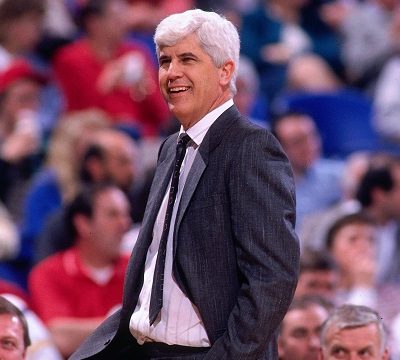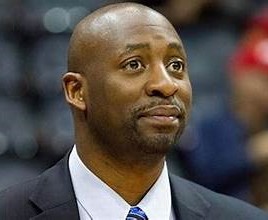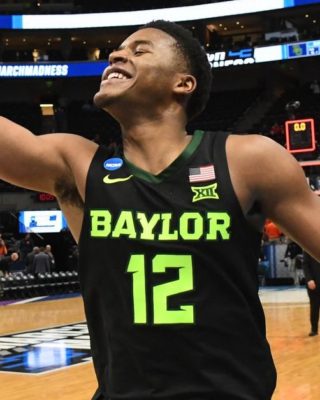Sikma perfectly executed Harris’ 3-point plan
Contrary to popular perception, big men shooting 3-pointers in the NBA isn’t a relatively recent phenomena.
Long-time pro basketball observers and historians will point out that the art of shooting a trey actually occurred more than three decades ago – long before Brook Lopez began shooting them like layups last season for the Milwaukee Bucks and even before Dirk Nowitzki broke onto the scene as a long-range bomber for the Dallas Mavericks in the late ’90s.
Yes in what seemingly is eons ago, in the mid-to-late ‘80s, Jack Sikma destroyed the myth big men couldn’t be as effective outside of the lane as in it. Sikma went to a place on the court seldom ventured before by players his size.
“Dirk Nowitzki gets the credit for being the first 7-footer to be a prolific 3-point shooter because, simply, most people who are writing today (about the NBA) don’t have the background of what happened 30, 40 years ago,’’ said 82-year-old Del Harris, who was Sikma’s head coach for the 7-footer’s last three NBA seasons in Milwaukee. “But Jack was the first 7-footer to be a prolific 3-point shooter.’’
And Sikma wouldn’t have had that distinction without the help of Harris who, like Sikma, will be recognized at this week’s Naismith Memorial Basketball Hall of Fame ceremonies in Springfield, Mass. Sikma will be inducted into the Hall on Friday night, one night after Harris will be presented with the prestigious John W. Bunn Lifetime Achievement Award.
It was Harris who concocted the plan to play Sikma more on the outside — even though the latter had been one of league’s most productive inside scorers during his nine-year tenure with the SuperSonics. During a six-season run in Seattle, from 1980-1986, Sikma averaged between 17.1 and 19.8 points a season. He wound up playing 715 games in Seattle — (he played all 82 games in six seasons), but attempted a mere 53 3-pointers.
But then Sikma was traded to Milwaukee in 1986 and the change of scenery soon brought a radical change in his game. After playing one season for then Bucks head coach Don Nelson and taking a measly two 3-pointers, Sikma took 14 treys the following season under Harris, Nelson’s replacement.
Then, Sikma let it fly.
Sikma launched 216 shots from beyond the arc the next season to become the first player who was 6-11 or taller to attempt more than 200 treys in a season. To put that into perspective, the next most 3-point attempts by a center that season was 91, by the late Manute Bol.
Sikma’s 216 3-point attempts even surpassed the totals of noted long-range shooters like Mark Price, Rex Chapman, Hersey Hawkins and Craig Hodges.
Not only did Sikma take an inordinate number of 3-pointers for a center, but he made a high rate of them: 38 percent. That tied him with Danny Ainge for 16th place overall in the category. The next best 3-point shooting percentage for a center that season was Bill Laimbeer at 34 percent. No other center shot above 21 percent from 3-point range.
“Del put me in that position and it worked out well,’’ Sikma said. “We kind of set the tone. We were a great example of what it could be in the future. And you see it today all the time.’’
Sikma paused and added, “I would fit in today’s game.’’
Harris, who was an NBA head coach for 14 years with Houston, Milwaukee and the Los Angeles Lakers and was the Coach of the Year for the 1988-89 season with the Lakers, fondly recalls one game where Sikma staged a 3-point shooting clinic.
“There was a San Antonio game in Milwaukee and Jack made five 3s in the first quarter against David Robinson’’ said Harris, referring to a game on Nov. 14, 1989 at the old Bradley Center in downtown Milwaukee. “(Spurs coach) Larry Brown went nuts. He couldn’t get David to come out after him.
“But that’s the things that Jack was able to do.’’
Sikma continued his long-range shooting in his final two seasons with the Bucks, launching 199 and then 135. They were easily the most attempts among centers in the league. He shot 34 percent each season.
While Sikma brought a whole dimension to the pro game with his 3-point shooting, he demonstrated his amazing shooting skills in another phase of the game: at the free throw line.
Sikma shot .849 from the line in his 14-year NBA career with his best showing coming in the 1987-88 season, which was Harris’ first as the Bucks head coach.
Sikma converted on 321 of 348 free attempts for a league-leading .922 percentage. It was and still is the highest free percentage ever recorded by a center.
“With the Sikma move, I was usually shooting 12 to 15 footers’’ said Sikma, referring to his signature step-back, ball behind-the-head shot. “From an efficiency standpoint, I always felt I needed to draw my share of fouls, especially if I could make those free throws.
“So I worked hard at improving my free throw shooting. I worked hard at recognizing situations where I could draw a foul and get to the line.’’
But did Sikma ever in his wildest dreams think he would set an NBA record and shoot a white-hot 92 percent from the line?
“I approached it this way: I concentrated on the next free throw,’’ Sikma said. “My goal was to make sure I made the next free throw and everything else would take care of itself.
“I didn’t think about my percentage. I just thought, ‘OK, you’re working hard to get to the line, now make sure you make it.’’
Suffice to say, Sikma and Harris are looking forward to getting together again at the Hall of Fame. Making it even more special for them is they’ll be joined by Sidney Moncrief, the former Bucks star guard and two-time NBA Defensive Player of the Year award winner who’ll be inducted into the Hall. Moncrief played for Harris and was a teammate of Sikma’s.
Said Harris: “With Sidney and Jack having been on the same team in Milwaukee, it’s just going to be wonderful.’’




